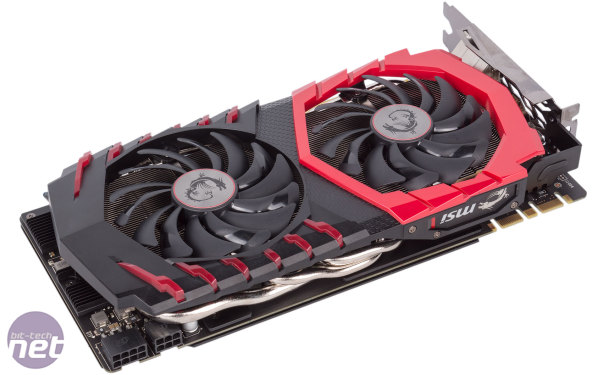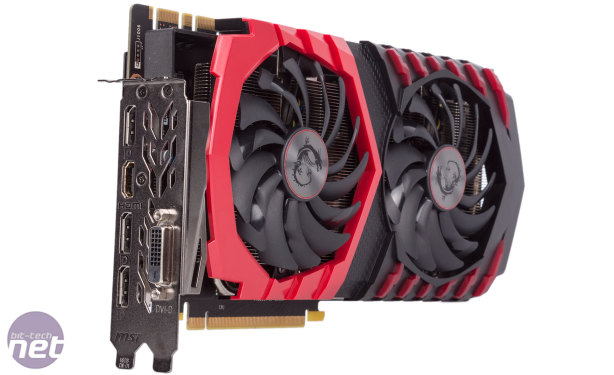Performance Analysis
We don't have up-to-date performance figures for other GTX 1070 cards, since the previous reviewed samples have now been returned and were tested on older drivers. That said, performance differences between overclocked variants of the same GPU are rarely significant. What we do see, however, is that the card is consistently faster than the previous generation Titan X (by about eight percent, on average), which is clearly an impressive feat.What the GTX 1070 Gaming X thus offers is performance that will handle practically any title running at 1440p with all the settings turned up. Average frame rates are always above 60fps in our games, and minimums never drop below 30fps, so you can be assured of very smooth performance. Even at 4K, the card has plenty of grunt, but you'll need to turn down some settings from ultra to high to prevent stuttering in the most demanding segments of games, as the sub-30fps minimum frame rates in Fallout 4 and The Division demonstrate.
Between the card's OC Mode and the default Gaming Mode, there is zero real-world difference. In Unigine Valley at 1440p, the score difference is less than 0.01 percent. This isn't surprising since in Gaming Mode the recorded boost speed during a prolonged stress test was 1,936MHz, which increased to 1,949MHz in OC Mode. Meanwhile, in Silent Mode, there's a bigger difference and the card drops to speeds that fluctuate between 1,822MHz and 1,849MHz, leading to a 3 percent decrease in performance in Unigine Valley.
Peak system power consumption was recorded as 363W, which is 23W higher than we saw with the Asus GTX 1070 Strix OC, suggesting the latter is more efficient since the cards run at similar speeds. Power consumption does drop to 331W in Silent Mode; unsurprising since here MSI also caps the power limit to 70 percent.
The Twin Frozr VI cooler adequately cools the GPU, with a maximum delta T of 48°C being healthy and never limiting the card's boost speed. To maintain this, the fans were spinning at 47 percent; approximately 1,150 RPM. At this speed, they were very quiet indeed. For reference, the Asus Strix OC card runs cooler, but also a touch louder. Ultimately, both cards have great coolers and you can tune them either for silence or performance, but we prefer MSI's quieter out-of-box approach if we had to pick.
Overclocked, system power consumption rose to 386W and the card was now boosting to 2,075MHz – near the high end of what we've seen achieved on Pascal chips cooled on air. The temperature rose by 3°C as a result, and the fans were also spinning faster at about 1,300 RPM, with noise output still on the quiet side. In return, average performance in a selection of tests rose by between 8 and 12 percent.
Conclusion
You're spoilt for choice when it comes to custom GTX 1070s, but the MSI GTX 1070 Gaming X is a particularly fine card. Sporting upgraded power circuitry, a meaty overclock to the core and a small bump to the memory speed too as well as a cooler that runs both cool and quiet, there's little more you could ask of it. Our sample also overclocked very well, although this obviously does come down to luck as well as card design. You'll need to watch out in some cases that there's enough room to support the card's height, but otherwise this is an easy recommendation, and given current pricing of other GTX 1070s its current asking price isn't over the top either, though that's not to say it's suitable for anyone shopping on a tight budget.

MSI MPG Velox 100R Chassis Review
October 14 2021 | 15:04











Want to comment? Please log in.